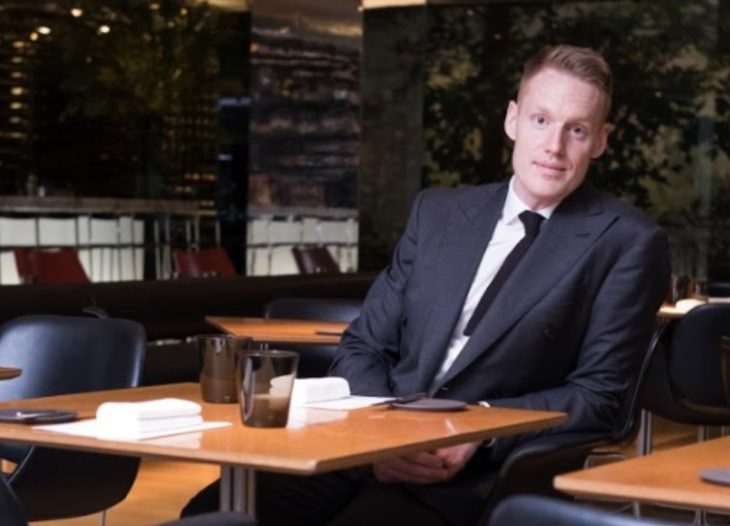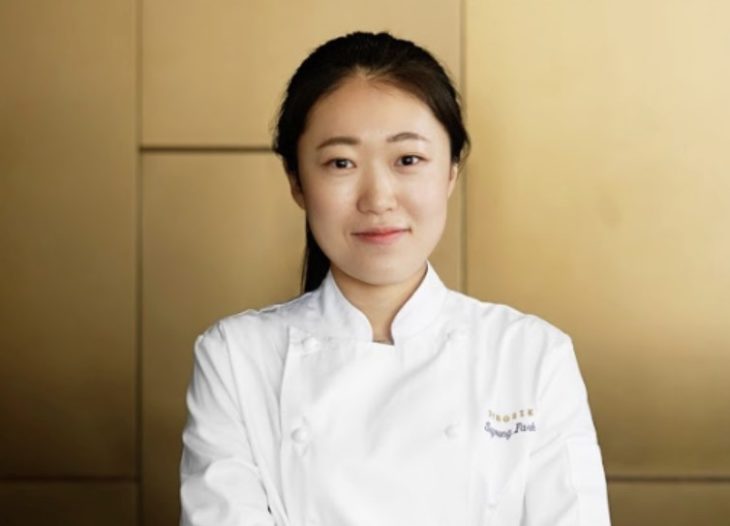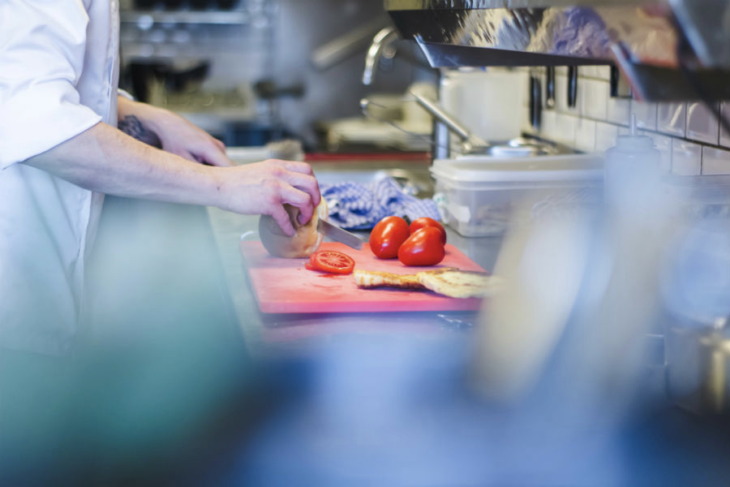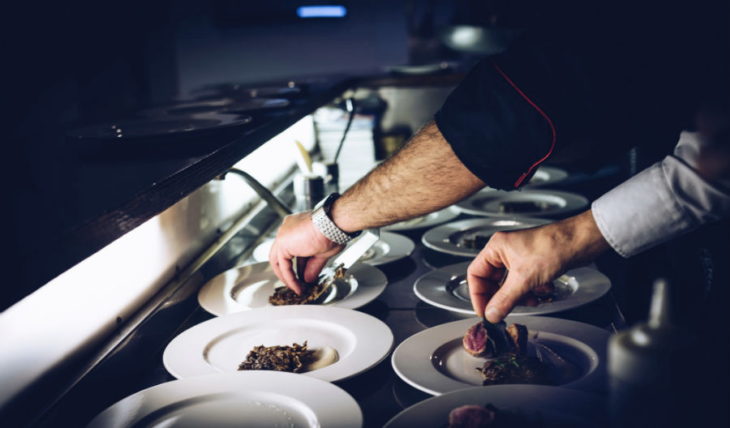Contents
If you can make it here…
Ever since the earliest days of the United States, New York City has been one of the most important cultural hubs in the country. There was even a time when it almost became the nation’s capital, but perhaps it’s for the best that Washington D.C. received the honor instead.
In the wake of this snub, New York was able to form its own unique identity. In the 20th century alone, New York became a breeding ground for some of the most influential artists, actors, writers, politicians, and culinary professionals our country has ever known.
Humphrey Bogart, Al Capone, Roz Chast, Tony Curtis, Bobby Flay, Jane Fonda, George Gershwin, Rita Hayworth, Calvin Klein, Stan Lee, Lucy Liu, Groucho Marx, Joan Rivers, Chris Rock, Tupac Shakur, Jerry Seinfeld, Meryl Streep, and Kristen Wiig — this is just a short list of some of the luminaries, some famous, some infamous, who have come out of New York City.
These days, New York remains a massive cultural influence and houses a huge number of industry leaders, especially when it comes to the culinary arts.
There are few American cities that can compete with New York’s thriving culinary scene, from upscale restaurants to food trucks to gastropubs to sidewalk food carts.
Sure, other major American cities like Los Angeles, Chicago, Austin, and even Portland have their fair share of unique and innovative restaurants, but if you’re looking for unrivaled variety and culinary inventiveness, then go ahead and book a trip to the Big Apple.
During a recent trip to New York, I had to take great pains to narrow down the list of restaurants that I wanted to visit over the course of my 7-day stay.
For adventurous eaters, the city is an embarrassment of riches, truly offering more than one can handle.
For restaurateurs, the city is both inspiring and challenging. It’s difficult to hold down a lease in any of the five boroughs, and it can be even more difficult to market a new restaurant in a severely overcrowded market.
As an outsider to the culinary world, I have a difficult time imagining what it must be like to face that kind of fierce competition to build a reputation.
To get an inside look at the day-to-day realities of the New York culinary scene, I spoke with two leading culinary artists about their struggles, their victories, and their overwhelming love of sharing great food with guests.
Without further ado, let’s meet the experts.
Same industry, different styles
Tony Carson of The Modern
Tony Carson is currently the General Manager of The Modern, which is the award-winning restaurant at the Museum of Modern Art (MoMA). The Modern holds two Michelin stars, the international symbol of excellence in the culinary arts.
Carson is originally from the UK, where he started out as a humble cook, later working as Head Waiter at celebrity chef Gordon Ramsay’s The Savoy Grill in London.

During his time with The Modern, Carson has also helped implement an innovative payment model referred to as Hospitality Included. Basically, the model builds gratuity into the price of each meal, eliminating the need to tip when the bill arrives.
This makes the payment process more convenient for guests and also helps distribute pay more evenly among restaurant staff members.
Suyoung Park of Jungsik
Suyoung Park, born in South Korea, has carried her love of Korean flavors and dishes to many high-end restaurants around the world.
She has worked with the Millenium Hilton in Seoul, the 2 Michelin-starred Jungsik, also in Seoul, where she worked her way up to the role of sous chef, as well as Ms. G’s in Sydney, Australia, a well-regarded modern Asian establishment.

In New York, she works with Jungsik’s American location, a modern Korean restaurant.
The restaurant’s minimalist decor and focus on family-style dishes underscore the importance of the food itself and an overall sense of community.
Suyoung Park’s versatility in the kitchen has led to her becoming one of the leading creative minds not just at Jungsik but in New York’s food scene as a whole.
The summit
Park, Carson, and I got together in a cozy coffee shop in Brooklyn to discuss how they’ve both been able to navigate the challenging, stressful, and sometimes grueling environment of New York’s culinary scene.
If you happen to be an aspiring culinary professional yourself, I highly recommend going through their responses with a fine-tooth comb to glean some valuable lessons that these talented individuals had to learn the hard way.
Cross-pollination
As we discussed above, the New York City culinary scene is unique for a number of reasons, not the least of which is the undeniable density of the city itself. This is not only a literal density but a cultural density as well.
The American melting pot is alive and well, especially in NYC, where recent pushes toward cultural diversity, from our entertainment to our language to our food, have encouraged entrepreneurs from many different cultural backgrounds to share their specialty with the city.
On one block you may have a modern Vietnamese restaurant serving craft beers, and just two blocks away there may be an old-fashioned Southern barbecue smoking whole pigs.
New Yorkers are never that far away from a world of cuisines, as long as the trains are running on time (or at all).
So do our experts take advantage of this invaluable opportunity? Short answer: of course.
As Carson told us, “I do like to visit and explore all kinds of restaurants in NYC, including fine dining restaurants as often as I can. NYC has a very robust community of hospitality professionals who are all very generous with their time and experiences.”

This kind of casual networking offers enormous benefits to any culinary professionals eager to learn. It’s an opportunity to get a glimpse of other techniques, other avenues to success.
Park agreed that going out of your way to visit other restaurants and observe everyone from the front of house staff to the kitchen staff can shed light on how different people do business and delight their customers.
“Once or twice a month I try to visit other fine dining establishments. Noticing how other restaurants do things differently gives me many ideas and enlightens my own perspective.”
For any artist, sealing yourself off in a bubble of your own style and personal preferences can have a stagnating effect. Taking notes on how other artists operate bursts that bubble, letting air in.
Business or art
I’ve spent a lot of time talking about how creating food is indeed an art form. I stand by that statement wholeheartedly, but there’s another major aspect of every restaurant on the planet that just can’t be ignored.
Restaurants need to make money, that’s just how it is. When it comes to high-end dining establishments, recurring upkeep costs can be incredibly high. Rent alone can be an unyielding challenge for many up-and-coming restaurants.
Likewise, high-quality ingredients can be incredibly expensive, even when purchased in bulk. Even expensive meals sometimes have razor-thin profit margins.
Even if your food is objectively magnificent, there’s no guarantee that word-of-mouth alone will be enough to bring in a consistent stream of customers.
Is it possible for business concerns to get in the way of the artistic side of professional cuisine? Does one take priority over the other?
For Park, it’s all about finding some kind of careful balance between the two.
“I think the culinary arts are a combination of both art and business. In a fine dining setting, I find that each dish presents its own philosophy, in a way. From that perspective, I would consider this to be an art. If culinary artists thought only about the business side of things, I think their creations would suffer.”
As a general manager, Carson deals directly with the financial concerns of The Modern. Marketing and reputation are crucial for the long-term success of any restaurant, and yet that reputation will falter if the quality of the food itself is lacking.
Above all else, Carson sees the importance of taking business-minded worries off the kitchen staff’s plate, so to speak.
“I agree that it contains elements of both. There is certainly an art to cooking. This is why you see so much passion in the culinary industry and why it is referred to as the culinary arts.
Both need to be given equal attention. If possible, I like to prevent our kitchen staff from having to worry about that sort of thing during work.”
The ability to prioritize based on each person’s role and the immediate needs of the restaurant is absolutely necessary here. Regardless of profession, worrying about everything at once doesn’t lead to motivation or action, but rather to mental paralysis and more severe anxiety.
A whole mess of stress
More specifically, the restaurant industry is notorious for being one of the most stressful working environments around.
Through the years, restaurant staff members have had to find ways to cope with this stress. As you might have guessed, some of these techniques are more healthy and/or successful than others.
Working in a New York restaurant is a whole different level. Every day is like the World Series. Every dish, every guest, every garnish matters.
But as Park reminded me during our discussion, it’s important to remember that we all experience work-related stress. Focusing on the universal quality of stress helps Park remain calm and assess each situation as it arises.

“You can’t avoid the stress. Everyone experiences stress in their work, no matter what they do. Personally, I try to identify each individual problem and work toward a solution from there.”
In the past, this method has certainly helped me keep my wits in difficult situations, especially when time is a factor. Approaching problems incrementally allows your mind to focus only on the problem at hand.
Carson advocated his own technique for dodging stress, a proven technique that gives him a chance to relax and recoup.
“I personally use regular exercise as a way to manage my stress levels. Getting away from the business for one hour each day to go for a run is something I do as much as possible. It allows me to return feeling as if I did something for myself so that I can continue to give the best side of myself to our team and to our guests.”
Leaps and bounds
Taking a look at Carson and Park’s more recent work, it’s hard to imagine that they were once beginners in their field.
In fact, both started out as humble cooks. While many talented young culinary artists expect to move up the ladder as quickly as possible, Park and Carson were prepared to learn as much as possible from each step of their career.
When Park was starting out on the bottom rung, it gave her a valuable insight into how the many different moving parts of a restaurant worked together in intricate ways.
“Most significantly, I now realize how the restaurant works as a whole. I still do my best to improve my cooking every day, but understanding how I fit into the big picture is also important.”
Carson reiterated how patience in a restaurant setting had to be developed through trial and error. At the very start of his career, there was a temptation to give in to the inherent anxiety of the kitchen.
“When I was young and just beginning in the culinary industry, I was a cook. It was a high-temper environment and that was the kind of environment I got used to. Over the years, I’ve learned the value of patience, especially when it is paired with perspective. I don’t really think enough people talk about the need to appreciate your current role.”
I don’t need to explain to our readers that modern society places a huge amount of importance on constant career momentum. Staying in the same role for too long is seen as unsavory.
Yes, progress is important, growth is important, but climbing the ladder without learning and staying humble can easily lead to overreaching.
The Korean connection
Returning to the topic of diversity in cuisine, I asked Park about her own relationship with Korean dishes and how it feels to share those dishes with American guests, some of whom may have never tried Korean food before.
“I love sharing unique Korean food with American guests. As a Korean chef, presenting Korean food makes me feel proud. Moving forward, I would love to continue to create beautiful Korean food and share it with the world.”
So far, Jungsik has allowed Park to do just that. While many of Jungsik’s dishes offer modern twists and takes on traditional Korean meals and presentation, the specifics of the restaurant’s setting draw attention to the social element of dining.
Every meal, regardless of its cultural roots, is about sharing good food as well as good company. Even simple foods can be enhanced by enjoying your surroundings.
Motivation station
Having served as a manager myself many years ago, I couldn’t let the discussion end without asking Carson about his personal approach to managing such a large team across multiple skillsets.
A big challenge for any manager is finding ways to motivate your team without seeming overbearing or mean-spirited.
If your team perceives you as not having their best interests at heart, trust starts to break down.
When it comes to fine dining, every team member needs to be on the same page at all times.
So how does Carson pull this off every day?

“We have meetings called line-ups with our entire team, twice a day. This really is an opportunity to inspire and energize our team. We speak about various different topics that all relate to hospitality in some way. It gives our teams the opportunity to speak, not just listen.”
I got my answer: the relationship with your employees is a two-way street. Was this the first time I’d heard the idea expressed? No, not really, but it’s an ideal well worth repeating. Of course, we all know that listening to co-workers is necessary, but it’s far too easy to forget this in the midst of a busy day.
Goals
After more than an hour, our discussion started to wind down. We’d each had at least two espressos, as well as a couple of top-notch blueberry muffins. Both Park and Carson would soon need to leave, getting back to their respective restaurants for a hectic Friday dinner rush.
In closing, the conversation turned to the concept of success. Both are certainly extremely successful, having gone from cooks to leading culinary professionals in the Wild West of New York’s restaurant community. But by this point, I knew very well that they would never be fully satisfied with their current level of expertise.
Park explained that the skills she has now would ultimately help her achieve even more lofty goals, and knowing that she can depend on herself to perform at her highest capacity is half the battle.
“I think my greatest strength as a culinary artist is endurance and patience. I do my absolute best at all times, and I believe that this commitment will help me achieve my own professional and culinary goals.”
Carson walked me through his complex understanding of success and the need to keep an eye on many different aspects at the same time.
Of all these aspects, taking care of others and himself remains the number one priority– a true hospitality professional to the end.
“I think I tend to break success down into four separate areas: self-fulfillment, human impact, external reputation, and financial health. As a general manager, each of these kinds of success is extremely important. Yes, it’s crucial to run a successful restaurant that’s well regarded in the community, but you also need to treat people well, your staff as well as your guests. Anything less and you’re not really succeeding.”
Takeaways
Following this insightful discussion with two culinary experts, I have to admit that my view of New York’s restaurant culture seems a bit like a very large, very complicated house of cards.
It may seem at first like it would be easy to remove just one piece without ruining the whole structure, but when you actually try to pull a card away, no matter how ancillary it may appear, the house comes tumbling down.
The host or hostess is important. Every server is important. Every line cook is important. The general manager is important, and so is the dessert chef and the bussing staff.
At the same time, each of these professionals is balancing many different things inside their heads to stay at the top of their game.
It would be impossible for me to walk away from this experience without feeling a renewed appreciation for everyone who makes great meals possible, and in New York, those great meals really are something special.
The city is different now than it was the last time you visited. In fact, it’s different than it was two months ago. One of the only consistent factors is that the city’s food scene is exciting, and it’s not to be missed.
